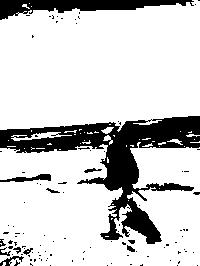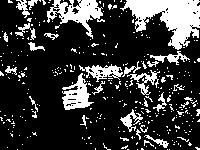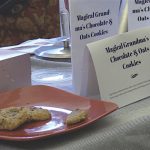Though relatively small, Kent Island has played important but very different roles for people for centuries. Read how Katie Craighill ’17 is drawing up a management plan for the island to protect it for native species and researchers well into the future, as told by Emily Weyrauch ’17 in the latest installment of her series on Kent Island life.
Kent Island has a long and varied history. For centuries indigenous groups used the island as a base for hunting seals. In the 18th century, Europeans settled there to farm. Today, the island is a wildlife sanctuary and research site, home to the Bowdoin Scientific Station.
Taking into account the island’s past, biology major Katie Craighill ’17 is creating a habitat management plan to help preserve the island into the future. She’s compiling information about previous land uses and cataloguing its present diverse terrain, flora and fauna. She is also outlining goals and strategies for its maintenance, including options for conserving scientifically important native species.
The plan covers Kent Island, as well as Bowdoin’s smaller Sheep and Hay islands, which are part of the Three Islands chain in the Bay of Fundy.
When the scientific station underwent an external review in 2014, the review team suggested the development of a habitat management plan. According to Bowdoin Scientific Station Director Damon, Kent Island has never had a coherent strategy. “It’s always been ad hoc,” he said.
“The goal of the habitat management plan stems from the mission of the field station itself,” he continued. “And the mission is to maintain a productive research station, with several long-term biological research projects that we want to keep going.” These include Savannah sparrow study sites and enduring research sites for Leach’s storm-petrels.
Gannon added that another part of the scientific station’s mission is to maintain biodiversity. Kent Island, though protected by its isolated location and status as a sanctuary, is still vulnerable to invasive species.
When snowshoe hares were introduced to Hay Island in 1959 (before Bowdoin acquired Hay and Sheep Islands) for hare ranching, they made their way over to Kent Island, which is accessible during low tide. The hares devastated the island forests, feeding on seedling and sapling trees. Their foraging stunted new tree growth and prevented the success of native plant species for 50 years. During the tenure of Nathaniel Wheelwright — Bowdoin’s Anne T. and Robert M. Bass Professor of Natural Sciences — as director of the Bowdoin Scientific Station, he worked on eradicating them through extensive trapping and hunting, a process that began in the 1990s and continued until the last hare was eliminated in 2007. However, the destructive effects of the hares are still visible today.
Part of Craighill’s project involves monitoring exclosures that kept the hares away from trees during their heyday on the island. In today’s forest of dead and dying spruce trees, the exclosures show a glimpse of what the forest could have been: they are full of new growth of green trees.
“Preventing [the introduction of invasive species] is one of the major goals for the management plan because we have a ton of bird species and if any kind of predatory mammal would get on the island, then the populations would be destroyed,” Craighill said.
She is currently examining the effects of the non-native muskrats, the only current terrestrial mammal living on Kent Island other than bats and humans. In the past year, river otters, a species known to prey on eggs and nestlings of seabirds, have also colonized the island.
A large part of Craighill’s research involves going off-trail and identifying plant species across the islands. “It’s like a treasure hunt,” she said. “You’re looking for different plants and, once you know them, it’s really cool to see them in the field and be able to identify them.”
Craighill’s interest in fieldwork was fostered when she spent part of her high school junior year at Chewonki Semester School, a residential academic program in Wiscasset, Maine, that focuses on environmental studies. At Kent Island, she has found another intimate community that feels like home. “It’s cold, we don’t have a real toilet, but that is all for the better, because you really have to bond quickly and become comfortable with people quickly,” she said.
When she’s not surveying the islands, Craighill spends her time on the island drawing wildlife, watching sunsets “that blow you away every time,” and hanging out with other students.
“All the things that you don’t really get to have time to do during the school year when you’re always studying or busy, here there’s this time when you can really relax and take the time to read out loud and play board games…to just have those times to bond with people,” said Craighill. “Not many people get to experience this type of island living.”





